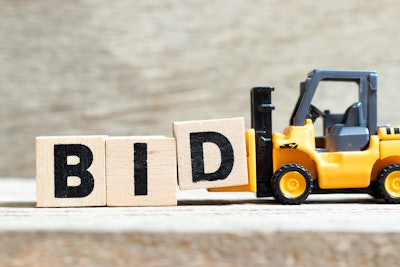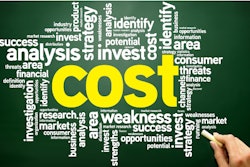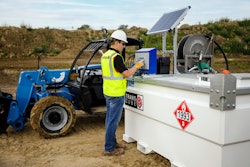
Many contractors think there are industry standards when it comes to bidding jobs. Nothing could be farther from the truth.
Even though there may be numbers floating around on what companies charge for different services, basing a bid on a generic number can lead you to no profit (or a loss) on a job and less profit than you expect at the end of the year.
The truth is the number – your number -- depends on your business size and overhead. A lot of companies never track their true overhead and add it in to their bids. Let’s take a look at how this works.
There are four main categories you should be including in what you bill your customers, and whatever the sum of those numbers is your bid, period.
1. Cost of Goods
This is the cost of the materials you use for any single project. Cost of goods includes, but is not limited to:
- The actual material you are applying (sealer, stone, dirt, concrete, asphalt, paint etc.)
- Labor. This is the cost of what you pay your workers (yourself included) to go to and complete a job). Do not take your earnings from your profits; that’s your company’s money, not yours.
- Fuel associated with this specific job
- Rental equipment used, if any
- Trucking or material delivery charges
- Extra items purchased for this project, such as water, flagging tape, stakes, caution tape, specialized items (special stencils) etc.
These are your Cost of Goods (COGs) and this should not be a guessing game!
2. Overhead Cost
This gets so many people in trouble because they do not charge for their overhead! At the end of the year, many contractors realize that they are not as “profitable” as they thought because they are spending their “profit” keeping their lights on. Let’s look at some things that should be included in overhead cost calculation.
- Insurances: Workers’ comp, general liability, vehicle, umbrella, health
- Office bills: electric, waste, office supplies, water, rent or mortgage etc. (if you have a home-based office, you need to talk to your CPA to figure out what you can write off and do it.)
- Advertising and marketing budget
- Travel/education
These are just a very few things that should be factored into your overhead. Basically, include anything that enables you to operate your business as a whole. Once you identify your annual costs to operate your business, add them together and divide the result by the 365 days a year your business is operating. That number should be included in what you charge your customers each day you are on their project.
3. Profit
This is true profit; it’s what you expect your company to pocket at the end of a job. If done right, at the end of the year what you put into your account for profit from each job should still be there. (Disclaimer: Our company has a method in which when we buy new equipment, how to write these off and not use profit. Even though we initially take from profit if need be, we replenish our profit account with our company equipment buy back.)
The profit is the percentage of money your company should make from a job. Whether it is 10, 15 or 20-plus percent, this is really your number and your volume. Remember: this number is your true profit number. So, if you think you deserve 50% profit and you use this method to get to your true number….You will probably be very overpriced!
4. Taxes
The tax man always wants their number, so you should calculate how much taxes you will have to pay per job on your profit. If your tax bracket is 14-18%, for example, calculate on the high end and use 18% as your tax number. After each job place and keep this amount in a separate account so when it’s time to pay the piper, you will not have to worry about pulling money out of your profit.
So, in closing, if your bidding correctly it should look something like this:
- Cost of Goods (COGs) = $1,000
- Overhead (1 Day) = $500
- Profit (the percentage of profit you want) = 22%, for example. So your profit number is COGs ($1,000) + Overhead ($500) x 22%, or 1,500 x .22 = $330 profit on that job
Remember, you are taxed on your profit, so multiply your profit ($330) x the high end of your 14-18% tax bracket (18%), which gives you the total taxes to add to your bid:
$330 x .18 = $59.40
To determine your bid on the job, add the four categories together:
$1,000 (COGs) + $500 (overhead) + $330 (Profit) + 59.40 (taxes) = $1889.40 FINAL BID











![Lee Boy Facility 2025 17 Use[16]](https://img.forconstructionpros.com/mindful/acbm/workspaces/default/uploads/2025/09/leeboy-facility-2025-17-use16.AbONDzEzbV.jpg?ar=16%3A9&auto=format%2Ccompress&fit=crop&h=135&q=70&w=240)








